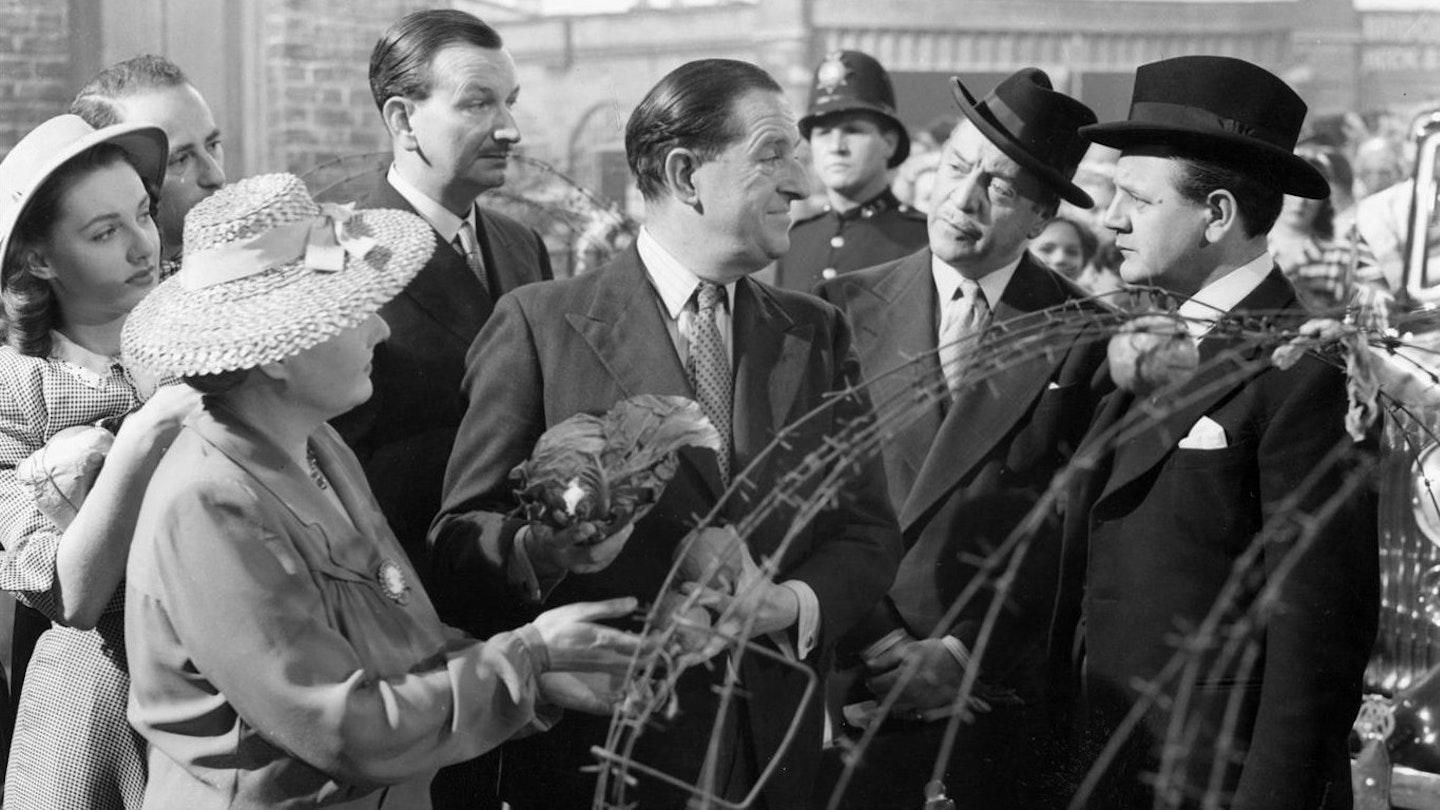For British cinema, 1949 was an annus mirabilis. It was the year of The Third Man and the year that Ealing Studios, under the watchful eye of Sir Michael Balcon, released not one but three comic masterpieces: Kind Hearts And Coronets, Whisky Galore! and Passport To Pimlico.
Funny and gently satirical in that arch way Ealing perfected, ‘Pimlico’ was arguably the smallest leap from the studio’s wartime propaganda efforts – at least in terms of its bomb-blasted location and the barbed wire twisting around its perimeter. In this case, though, the wire wasn’t to keep Jerry in but furious locals out. Cast member Barbara Murray took up the story when Empire delved into the Ealing archives...
If gems were rolling off the Ealing production line in 1949, there was little initial confidence that Passport To Pimlico would be one of them. Barbara Murray, who plays Shirley Pemberton in the film, recalls plenty of on-set anxieties. “The rumour was that it was a bummer,” she explains. The problem wasn’t the story – a tale involving unexploded bombs, parchment McGuffins and a small corner of London that would be forever Burgundy – so much as director Henry Cornelius’s overruns. “There was an awful lot of friction between Cornelius (pictured) and Michael Balcon,” Murray explains. “It was supposed to take six weeks to make. I think it took six months.”
By rights, the final film should have been called ‘Passport To Lambeth’. Rather than Pimlico, it was the wrecked surrounds of China Walk, a mile to the south, that were used for the shoot. It’s a setting Murray remembers vividly. “You’ve no idea what London looked like at the time, especially up against China Walk in Lambeth. It was a huge bombsite; absolutely flattened.”
This production sketch shows the ‘Pimlico’ of the film starting to take shape on the Ealing drawing boards. Pictured is the fictional Miramont Place (Lambeth Road and Hercules Road in real life). An unexploded bomb discovered in the wastelands beyond sparks the discovery of ancient documents that leads its denizens to declare themselves citizens of an independent Burgundy. Think of Cornwall, only with more barbed wire and fewer pasties.
Balcon and his fellow bigwigs couldn’t have anticipated the furious reaction of Lambeth locals to the construction of the set’s housing. Like Blazing Saddles’ fake Rock Ridge, fake Pimlico involved ‘flats’, painted house fronts that would have been cosily familiar to filmmaking veterans, but were essentially a red rag to homeless South Londoners. “There was a riot!” shudders Murray, who was bused to the set each day from costume and make-up in Ealing. “The whole encampment was surrounded by barbed wire and we had escorts to take us in and out each day.”
![]){href='javascript
Click to enlarge ![]){href='javascript
Click to enlarge
 ![]){href='javascript
![]){href='javascript
Click to enlarge ![]){href='javascript
Click to enlargeWhile Passport To Pimlico’s Lambeth sets were being constructed in the rainy early summer of 1948, in Ealing there was enough paperwork being done to set up a real republic. Amongst it were requests to reference the Encyclopaedia Britannica and cabaret star Leslie ‘Hutch’ Hutchinson in the script. As these documents show, both worked out nicely.
Back in Lambeth, irate locals were eventually becalmed and the cameras started rolling. The next challenge was Cornelius’s temper. The Luftwaffe bomb wasn’t the only thing on the set with a fuse, as blasts of irritation from the notoriously perfectionist director became commonplace. Murray, 18 years old and working on her first film, suffered especially at the hands of ‘Corny’. “He was an extraordinary man but very, very difficult,” remembers the actress. “He had a vicious tongue and he would humiliate you in front of the extras. He and Michael Balcon used to have the most terrible set-tos at the studio, which I used to secretly enjoy because you love to see a bully taken down.”
Despite the overruns, spats and a bout of illness that took Cornelius away from the shoot (“he was on a cabbage diet for it,” recalls Murray), the director soldiered on. Even the end product – a comic joy and a big box-office hit – didn’t spare him a reputation for being ‘difficult’. New scripts dryed up. The cabbage thing probably didn’t help. When he was hired for another project, a car caper around southern England, the rumour was that it would flop badly. Again, the scuttlebutt was wrong. “That one turned out to be Genevieve,” laughs Murray.
![]){href='javascript
Click to enlarge ![]){href='javascript
Click to enlarge
 Once the protracted shoot finally wrapped, there was Hays Code censorship to worry about. “Intimate parts of the body – specifically, the breasts of women – [must] be fully covered at all times,” droned this humourless missive from the Production Code. Boob-free, Balcon and co. ploughed on. The film made its US bow on October 26, 1949, six months after it wowed British audiences.
Once the protracted shoot finally wrapped, there was Hays Code censorship to worry about. “Intimate parts of the body – specifically, the breasts of women – [must] be fully covered at all times,” droned this humourless missive from the Production Code. Boob-free, Balcon and co. ploughed on. The film made its US bow on October 26, 1949, six months after it wowed British audiences.
“My memories are of pleasure and pain,” Murray (pictured) reflects with fondness of the shoot, recalling cinemagoers’ first reactions to the finished film. ”It was wonderfully exciting to hear the cinema rocking with laughter.”
Passport To Pimlico is out on DVD and Blu-ray from June 11._Click here_for more on the Made In Britain season.
Pictures reproduced by kind permission of Studiocanal Films Limited and Gunnesbury Park Museum
